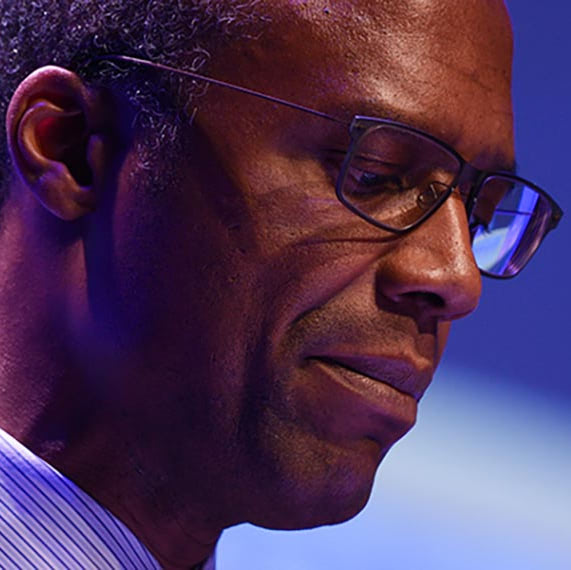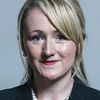Independent SAGE report on Should Schools Reopen? Sector Response

SAGE Advice Published – The scientific papers on school safety from the committee of independent scientists chaired by Sir David King was published today (22 May) with advice relating to the reopening of schools
 Education Secretary Gavin Williamson said:
Education Secretary Gavin Williamson said:
“The papers published by SAGE today show that the phased, cautious return of a limited number of pupils to classrooms has been a carefully considered decision based on the best scientific and medical advice.
“My department continues to engage with the school, college and nursery sectors and I am enormously grateful for all the planning and preparation they are doing, alongside local authorities and academy trusts.
“The welfare of children remains at the very heart of everything we are doing because being able to be back in school will benefit not just their education but also their wellbeing.”
A Department for Education spokesperson said:
“The evidence published today shows we looked at a range of options in drawing up this phased approach to reopening schools, which is in line with the Government’s overall ‘roadmap’.
“As in other countries across Europe, the first phases of the wider opening of schools will prioritise younger children. Advice from SAGE shows there is a lower overall risk from opening schools and nurseries to younger children, and that they are less likely to become unwell if infected with coronavirus compared to adults.
“This cautious, phased approach for allowing a limited number of pupils back into classrooms has been, and will continue to be, informed by the best possible scientific and medical advice.”
“The paper Modelling and behavioural science responses to scenarios for relaxing school closures from the Interdisciplinary Task and Finish Group on the Role of Children in Transmission, shows that the fewer children attending educational settings, the lower the impact on R, and that the relative impact on R is lower for opening settings for earlier year groups.
“The models consistently show that resuming early years provision has a smaller relative impact on R than resuming provision for primary schools, which in turn has a smaller relative impact than resuming secondary schooling.
“On Friday 15 May we published an overview of the scientific advice used to inform decisions on the planed return to school for some year groups from 1 June at the earliest.”
 Dr Patrick Roach, General Secretary of the NASUWT-The Teachers’ Union, said:
Dr Patrick Roach, General Secretary of the NASUWT-The Teachers’ Union, said:
“The evidence presented by SAGE in terms of justifying the decision by Government to start to reopen schools from 1 June is inconclusive.
“The papers highlight the significant gaps in evidence, knowledge and understanding which remain in terms of the susceptibility of children to COVID-19 and how infectious those with mild and asymptomatic cases of the virus may be.
“The Committee states that large-scale community testing is needed to better understand and monitor the prevalence of and susceptibility to COVID-19 in children, yet the Government’s plans for the reopening of schools from 1 June are premature whilst a widespread community testing system will not be in place.
“The SAGE papers published today will only add to teachers’ uncertainty and anxiety.
“Importantly, the Committee has concluded that interventions around preventing the spread of the virus must be eased in a logical manner.
“However, the arrangements for easing the current restrictions on schools have been far from logical and are yet to secure the confidence of parents and school staff.
“The NASUWT remains of the view that no school should reopen until it can be demonstrated that it is safe to do so. We remain ready to work with the Government on a way forward which will ensure that staff and pupils can return to schools safely.”
 Liberal Democrat Education spokesperson Layla Moran said:
Liberal Democrat Education spokesperson Layla Moran said:
“The government at the 11th hour have relented and released the scientific advice. Serious questions need to be asked about why it took so long for this to be made public. The delay has caused unnecessary stress to parents and teachers and left schools answering questions in the dark.
“The advice suggests that any reopening when the R rate is close to 1, which it may well be right now in some regions of the UK, risks causing a second peak. There are also concerns for BAME and older teachers – why has the Government ignored this in their guidance?
“This whole sorry saga is a sad indictment on Gavin Williamson, his failure to listen, and his lack of control of his department during this crisis.”
 Rebecca Long Bailey MP, Labour’s Shadow Education Secretary, said:
Rebecca Long Bailey MP, Labour’s Shadow Education Secretary, said:
“It is in the interests of all those who will be affected by the wider opening of schools for the government to be transparent about the advice on which it is acting and to act upon the concerns raised by parents, school staff and teaching unions.
“Certainly on first reading the advice does not appear to provide the clear assurances regarding safety many school staff and parents were hoping for, stating that there is a high degree of uncertainty as to the susceptibility and infectivity of children.
“It also confirms that there will need to be clear communication to teachers and parents and that messages should be developed in partnership with teachers, parents, and students which sadly has not been the case in Government actions so far.
“Labour is calling for the government to urgently convene a taskforce of education unions, parents organisations and health experts to review this advice, agree upon a series of practical safety conditions that must be met within schools before the Government confirms a date for wider reopening and to confirm that test, track and trace will be fully operational.”
Cllr Judith Blake, Chair of the LGA’s Children and Young People Board, said:
“We are pleased that the Government has published the scientific evidence ahead of the proposed date to reopen primary schools for some children, as called for by the LGA and councils.
“Councils have worked with all schools to keep them open throughout the coronavirus pandemic for vulnerable children and families of key workers. Councils are keen to support their local schools to get children back as soon as possible. However, the safety of children, their families and staff will always be the top priority.
“A clear national message is now needed from government about the safe return of children to schools and the scientific advice must be accessible for all parents to support efforts by schools and councils.
“We also continue to call for crucial testing data to be shared with councils, to help enable greater confidence for teachers and parents around school openings, and powers to manage outbreaks in places like schools, care homes, businesses and communities if new COVID-19 clusters emerge.”
 Dr Mary Bousted, Joint General Secretary of the National Education Union, said:
Dr Mary Bousted, Joint General Secretary of the National Education Union, said:
“Throughout this crisis the National Education Union has been consistent. We have been resolute in protecting the safety of our members, the children they teach, their families and the wider community. We have also demanded our seat at the table in talks with the Department for Education, and regularly requested access to the science driving the Government’s decisions on the wider opening of schools.
“Today, two months since lockdown was introduced, the Government has finally granted access to some of the scientific modelling behind its proposal for schools to open more widely from June 1.
“We are surprised that the wider opening of schools proposed by Boris Johnson has not been modelled by SAGE. This points to a cavalier attitude towards the nation’s children.
“The fact of the matter is that SAGE has only weak evidence as to what extent children can transmit the virus to others. The Office of National Statistics has recently indicated that age does not affect the likelihood of being infected. And last week, the Government’s scientific panel told us that there are cases where children do act as the index case.
“If we cannot be certain about the transmission of the virus – and it appears SAGE cannot, either – then it is only right to exercise caution.
“Today’s report from the Independent SAGE group, chaired by Sir David King, casts further doubts. They have no confidence in a robust track and trace system being in place by June 1, nor low enough levels of Coronavirus in the community. King told us today that the chances of either of those being in place by the Government’s hasty, arbitrary date, is ‘virtually nil’. The report argues that a postponement of two weeks would halve the risk of children getting the disease.
“It remains the case that the National Education Union does not yet think it safe for the wider opening of schools. In addition to track and trace and the case numbers, we need to see regular testing and PPE for those who need it.
“There is a huge disconnect between announcement and delivery. It is not sufficient for the Prime Minister to tell the Commons we will have a ‘world-beating’ track and trace system within 12 days, and expect the whole country – and school leaders – to take a leap of faith with him.
“The Government has made many missteps since this crisis began, and the DfE was slow to bring all education unions on board. We are glad that the science, or some of it, is now available to us. We invite scientists across the country to help us assess the evidence published and clarify any uncertainty and the level of risk in front of us.”
 Commenting earlier on Should Schools Reopen? the draft report of Independent SAGE, Kevin Courtney, Joint General Secretary of the National Education Union, had said:
Commenting earlier on Should Schools Reopen? the draft report of Independent SAGE, Kevin Courtney, Joint General Secretary of the National Education Union, had said:
“We have been pressing for publication of the science for many weeks, so we strongly welcome this important intervention from Independent SAGE on the critical issue of school safety during the Coronavirus pandemic.
“We would like to thank them for contributing so much to the public’s understanding of the risks involved in a wider opening of schools.
“Independent SAGE set two crucial conditions for the safe wider opening of schools: low levels of Coronavirus in the community, and a robust track and trace system. Today, Sir David King said in answer to a question from the NEU that the chances of those being met by June 1 are ‘virtually nil’.
“The Government must finally relent on its arbitrary target date of June 1, and accept it is simply not yet safe for the wider opening. Schools and families cannot go on with such uncertainty.”
UNISON head of education Jon Richards said:
“This is the evidence school staff and parents have been waiting for. Not only do these scientists say the government’s plans for schools in England are premature, they also suggest any risks to children would be halved by waiting a fortnight.
“Ministers need to heed these concerns, stop doggedly pushing schools to meet the arbitrary 1 June deadline, and ensure proper tracking and tracing is up and running first.
“There are real concerns the government is gambling with the safety of pupils, staff and the wider community.
“It makes no sense for ministers to push schools to open more widely in England, while other parts of the UK take a more considered approach.
“It’s time ministers took a step back and delayed any moves to increase the number of pupils in schools until it’s safer to do so.”
Earlier today, UNISON – which represents caretakers, administrative staff, teaching assistants, cleaners and caterers – published the results of a survey of more than 45,000 school support staff.
This found an overwhelming majority don’t feel reassured by government claims that English schools are safe to open to more pupils at the start of next month, and that ministers’ rushed back-to-the-classroom plans aren’t putting safety first.
Workers’ confidence in their own schools’ ability to be ready for a wider opening in June was low. Just over three quarters (77%) didn’t feel their school would have the resources to cope with the additional responsibility of putting health, safety and risk assessments in place in time.
Support staff – which make up more than half of the schools’ workforce – were also concerned about the impact of a rushed return on their own children.
Of those with school age children, 95% said they didn’t feel it was safe to send them back to school. One worker said she was ‘petrified’ at the thought of her seven-year-old going back.
UNISON is concerned that because support staff tend to be older, are disproportionately from the BAME community and come from more disadvantaged backgrounds, they are more at risk from the virus.
Scientific Advisory Group for Emergencies (SAGE): Coronavirus (COVID-19) response
The Scientific Advisory Group for Emergencies (SAGE) provides scientific and technical advice to support government decision makers during emergencies.
Role
SAGE is responsible for ensuring that timely and coordinated scientific advice is made available to decision makers to support UK cross-government decisions in the Cabinet Office Briefing Room (COBR). The advice provided by SAGE does not represent official government policy.
Find out more about SAGE (PDF, 101KB, 4 pages).
Participants
The group is chaired by the Government Chief Scientific Adviser, Sir Patrick Vallance and co-chaired by the Chief Medical Officer, Professor Chris Whitty, and includes experts from within government and leading specialists from the fields of healthcare and academia.
View the full list of participants of SAGE and related sub-groups.
Expert groups
SAGE relies on external science advice and on advice from expert groups. During COVID-19 this includes the:
- New and Emerging Respiratory Virus Threats Advisory Group (NERVTAG)
- Scientific Pandemic Influenza Group on Modelling (SPI-M) (Department for Health and Social Care)
- Independent Scientific Pandemic Influenza Group on Behaviours (SPI-B)
These groups consider the scientific evidence and feed in their consensus conclusions to SAGE.
Scientific evidence supporting the government response to COVID-19
The national and global response to the spread of COVID-19 continues to develop quickly and our knowledge of the virus is growing. These statements and accompanying evidence demonstrate how our understanding of COVID-19 has evolved as new data has emerged.
The evidence was often complied very rapidly during a fast-moving response and should be viewed in this context. The papers presented here are the best assessment of the evidence at the time of writing, and their conclusions were formed on this basis. As new evidence or data emerges, SAGE updates its advice accordingly. Therefore, some of the information in these papers may have been superseded at a later date.
Dynamic reports from the COVID-19 Clinical Information Network (CO-CIN) have been provided to SAGE to highlight ongoing information and evidence about COVID-19 for a large sample of hospitalised UK patients. As the reports are dynamic, the data included and analyses change over time and in each report. Particularly for early reports, there may be a risk of misinterpretation – it is important that any potential signals have been confirmed as robust and not taken out of context. A peer reviewed publication is forthcoming which reports summary results between 6 February and 19 April 2020. A preprint is currently available at: www.medrxiv.org/content/10.1101/2020.04.23.20076042v1.full.pdf
This page will be updated on a regular basis with the latest available evidence provided to SAGE.
Introduction to the evidence
R number
SAGE meeting papers
View the full list of meeting papers (CSV, 10.3KB).












Responses